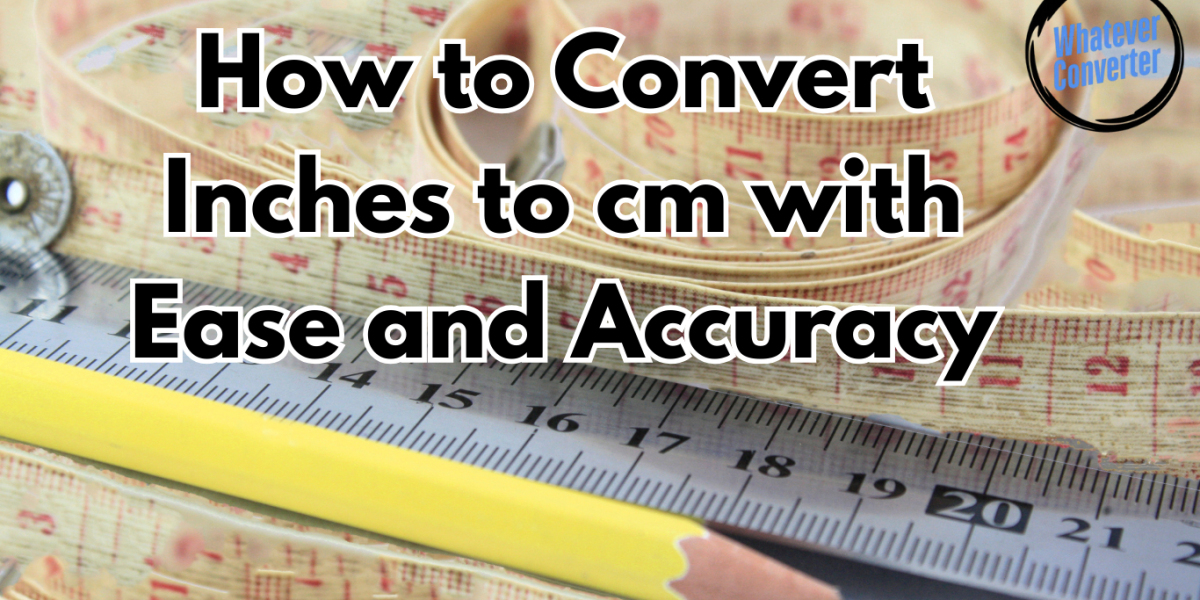When you’re dealing with measurements, precision is everything. Whether you’re buying furniture online, tailoring clothes, or working on a DIY project, the difference between inches and centimeters can make or break the final result. Since the imperial and metric systems don’t naturally align, understanding how to convert inches to cm is a valuable skill. This guide will walk you through the process, explain why the conversion matters, and show you practical tools to make it effortless.
Understanding the Difference Between Inches and Centimeters
Before jumping into conversions, it’s important to understand what each unit represents. An inch is a unit of length used primarily in the United States, Canada, and the United Kingdom for certain applications. On the other hand, a centimeter is part of the metric system, which is widely adopted worldwide. One inch equals exactly 2.54 centimeters—a value standardized internationally in 1959.
While this might seem straightforward, confusion often arises because many products, blueprints, and online specifications may list sizes in one system but not the other. For example, a laptop description might show “13 inches” in size, but you might need the measurement in centimeters to check if it fits your backpack. Knowing the precise conversion saves time and prevents costly mistakes.
The Simple Formula to Convert Inches to cm
The formula for converting inches to cm is simple and consistent:
Centimeters = Inches × 2.54
Let’s say you have a table that’s 40 inches long. Multiply 40 by 2.54, and you get 101.6 cm. This straightforward multiplication works for all measurements—whether they’re whole numbers, decimals, or fractions.
If you’re dealing with fractional inches, convert them into decimal form first. For instance, 5 ½ inches is 5.5 inches. Then, multiply 5.5 by 2.54 to get 13.97 cm. Once you get used to the process, you can do it quickly in your head or with a calculator.
Common Scenarios Where Inches to cm Conversion is Essential
You might think you only need this skill in a math class, but in reality, it plays a role in daily life and various industries. For example:
Interior Design & Home Renovation – If you’re buying curtains from a store that lists sizes in inches but your window measurements are in centimeters, you need quick conversions to ensure a perfect fit.
Online Shopping – Many international e-commerce sites list product sizes in inches. Knowing the centimeter equivalent helps you avoid ordering items that are too small or too large.
Travel & Luggage – Airlines often use centimeters in baggage dimension limits, but suitcase tags might show inches.
Crafts & DIY Projects – Sewing patterns, woodworking plans, and 3D printing models often mix measurement systems.
Science & Education – Laboratory experiments frequently require exact measurements, making precise conversions a must.
These examples show that understanding inches to cm conversions isn’t just for technical experts—it’s a practical life skill.
Tools and Resources for Quick Conversion
While manual calculations are important to understand, having reliable tools at your fingertips makes the process even faster. One useful option is whateverconverter, which allows you to convert inches to cm instantly. You simply enter your measurement in inches, hit convert, and get an accurate result in centimeters.
Unlike some online calculators, whateverconverter is straightforward, clutter-free, and precise. It works well on both desktop and mobile devices, making it perfect for quick checks while shopping or planning a project. Having a tool like this means you can confidently work across different measurement systems without slowing down your workflow.
Tips for Accurate and Efficient Conversions
Even with tools available, there are a few habits you can develop to make sure your conversions are always correct:
Double-Check Measurements – Before converting, ensure your original measurement in inches is accurate. An incorrect starting point will always give you a wrong result.
Use Consistent Units – Don’t mix inches and centimeters in the same calculation without converting one to the other first.
Round Only When Needed – For projects requiring precision, keep the full decimal result instead of rounding too early.
Understand Context – In some fields, like fashion or engineering, even a small fraction of a centimeter can matter significantly.
Keep a Conversion Chart – Having a printed or digital inches to cm chart nearby can speed up the process when working on repetitive tasks.
By combining these habits with a reliable tool like whateverconverter, you’ll be able to make conversions quickly and accurately every time.
Why Learning Inches to cm Benefits You Long-Term
Beyond the immediate practical uses, understanding how to convert between these units can improve your confidence in handling international projects. For example, if you’re a freelancer working with clients from different countries, being able to seamlessly switch between measurement systems can set you apart as detail-oriented and globally adaptable.
Furthermore, this skill removes the guesswork from everyday decisions—whether that’s choosing the right-sized appliance for your kitchen or interpreting technical specifications. Over time, you’ll find that doing quick mental conversions becomes second nature, making you faster and more efficient in both personal and professional settings.
Final Thoughts on Converting Inches to cm
Converting inches to cm doesn’t have to be complicated. By remembering the simple formula—Centimeters = Inches × 2.54—and using trusted resources like whateverconverter, you can handle any measurement challenge with confidence. Whether you’re an online shopper, a DIY enthusiast, or someone working on global projects, this skill ensures that every inch and centimeter counts.
In a world where measurement systems vary, having the ability to convert seamlessly is more than just useful—it’s essential for precision, efficiency, and informed decision-making.
















